Posts Tagged: Rollin Coville
A Bumble Bee on Mustard in the Golden State
What's better than a yellow-faced bumble bee (Bombus vosnesenskii) on yellow mustard? Not much. Both are signs of early spring. Mustard is popping up all over, along with oxalyis and wild radish. The earth is warming. Spring is here. Get ready. In the...
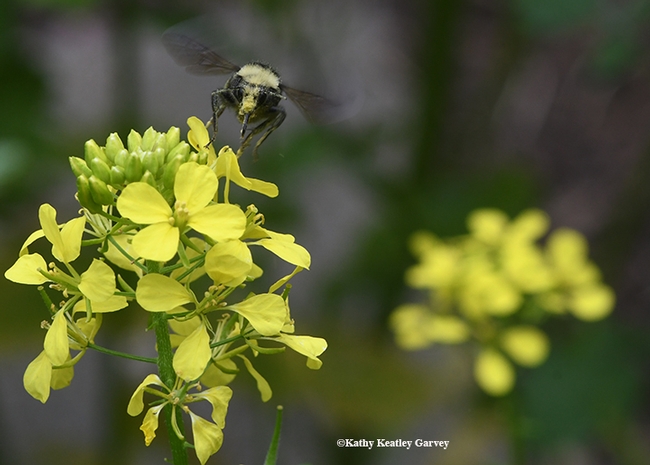
A pollen-laded yellow-faced bumble bee, Bombus vosnesenskii, buzzes toward a mustard blossom. (Photo by Kathy Keatley Garvey)
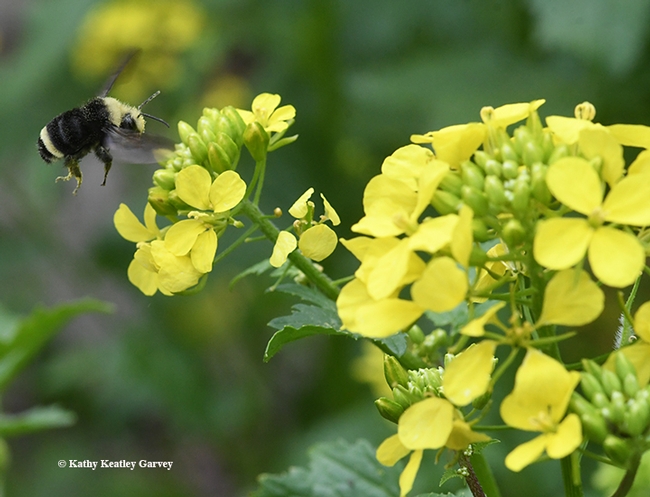
Coming in for a landing! A yellow-faced bumble bee, Bombus vosnesenskii, lands on a mustard blossom. (Photo by Kathy Keatley Garvey)
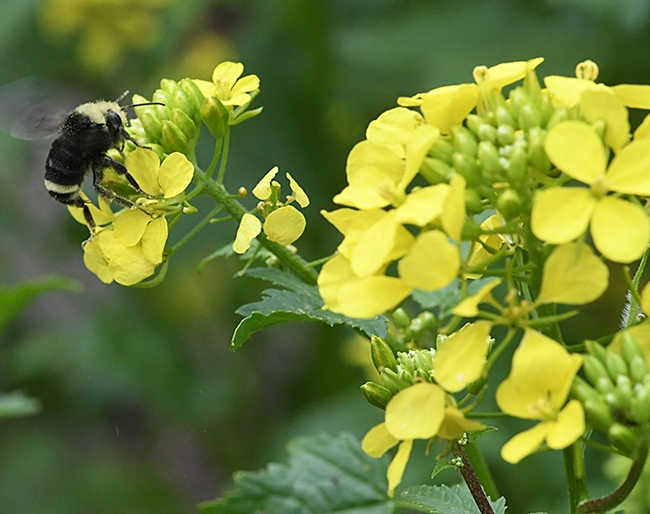
It doesn't get any better than this. Yellow-faced bumble bee (Bombus vosnesenskii) lands on a mustard blossom. (Photo by Kathy Keatley Garvey)
Here Come the Carpenter Bees!
It's spring and it's loud in the Spanish lavender patch. The girls--the honey bees--are buzzing furiously as they forage among the blossoms, but so are the boys, in this case the mountain carpenter bee, Xyclocopa tabaniformis orpifex. The girls are...
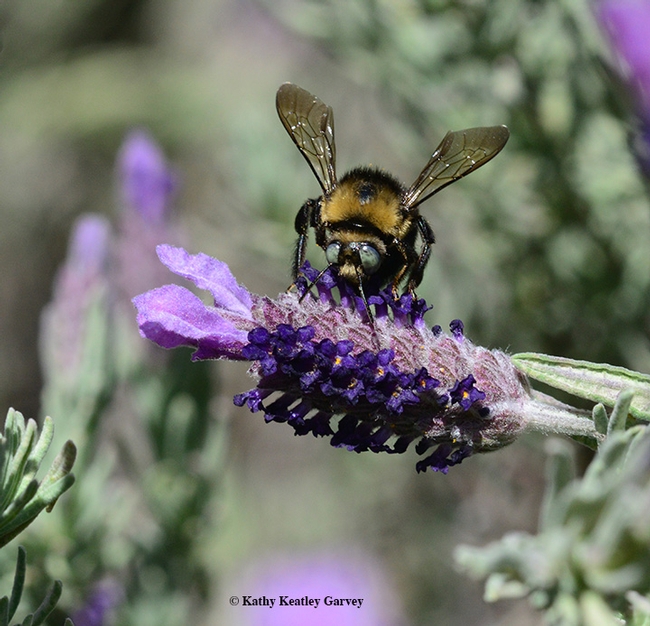
A male mountain carpenter bee, Xyclocopa tabaniformis orpifex, nectaring on Spanish lavender. (Photo by Kathy Keatley Garvey)
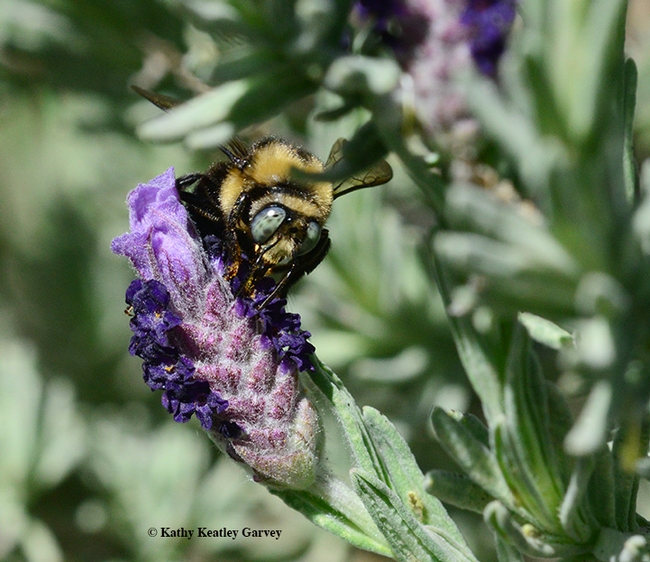
A male mountain carpenter bee, Xyclocopa tabaniformis orpifex, peers at the photographer. (Photo by Kathy Keatley Garvey)
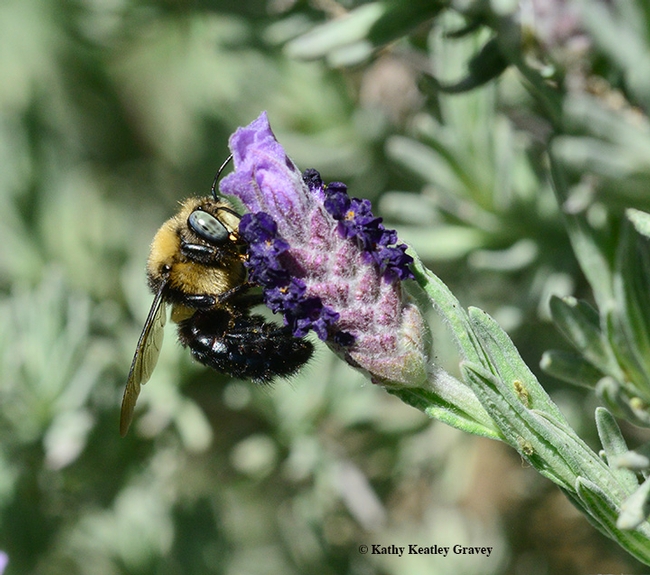
Side view of the male mountain carpenter bee, Xyclocopa tabaniformis orpifex, nectaring on Spanish lavender. (Photo by Kathy Keatley Garvey)
What's That Bee? How to Identify and Attract Native Bees to Your Garden
Have you ever seen a bee buzzing around your garden and wondered: "What's that bee?" Or have you ever seen a bee nectaring in a community garden and wondered "How can I attract THAT bee to my yard?" Just like all floral visitors are not bees, not all...
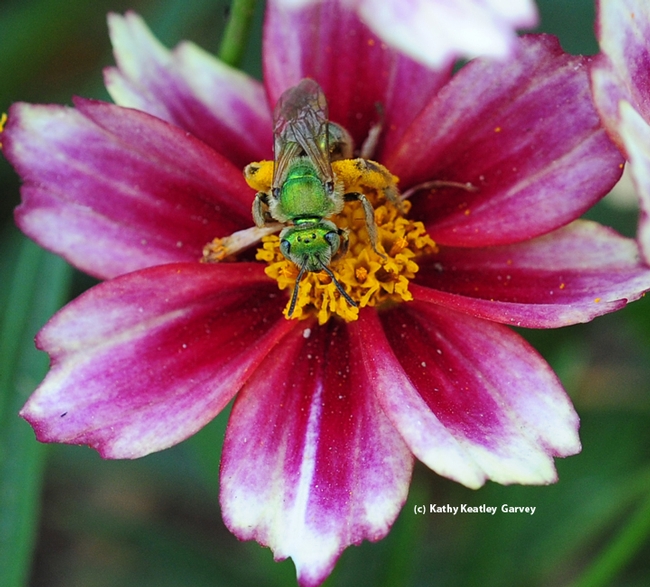
A female ultra green sweat bee, Agapostemon texanus, on Coreopsis tinctora 'Mahogany.' (Photo by Kathy Keatley Garvey)
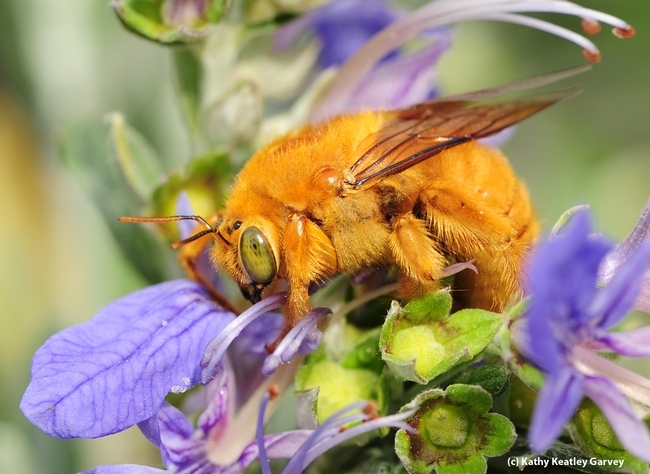
A male Valley carpenter bee (Xylocopa varipuncta) "the teddy bear bee" on germander. (Photo by Kathy Keatley Garvey)
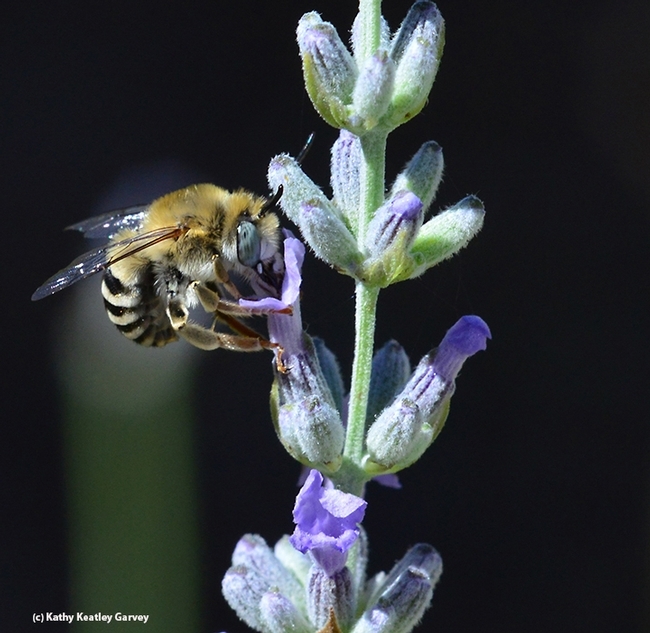
A digger bee, a male Anthophora urbana, on lavender. (Photo by Kathy Keatley Garvey)
Landmark Book Addresses California Bees, Blooms
If you're looking for a holiday gift for family and friends--or maybe yourself--think bees and blooms. Specifically, California bees and blooms. Even more specifically, undomesticated bees (that is, not honey bees). Did you know that: Of the 4000...
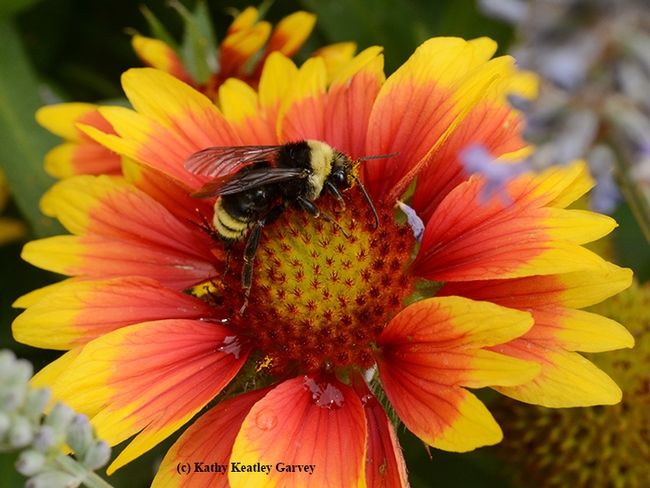
This is a native bumble bee, Bombus californicus, on blanketflower (Gaillardia). (Photo by Kathy Keatley Garvey)
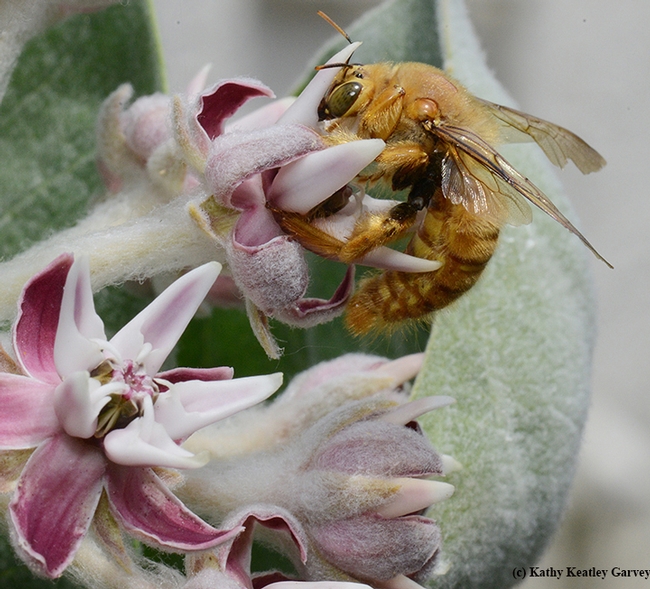
Often mistakenly "identified" as a "golden bumble bee," this is the male Valley carpenter bee, Xylocopa varipuncta, on flowering milkweed. (Photo by Kathy Keatley Garvey)
Know Your Native Bees: Here's How!
Do you know your native bees? Can you distinguish a sweat bee from a leafcutting bee from a cuckoo bee from a mining bee? No sweat? Or, are you...ahem...sweating the answer? You can learn more about native bees at a special presentation on...
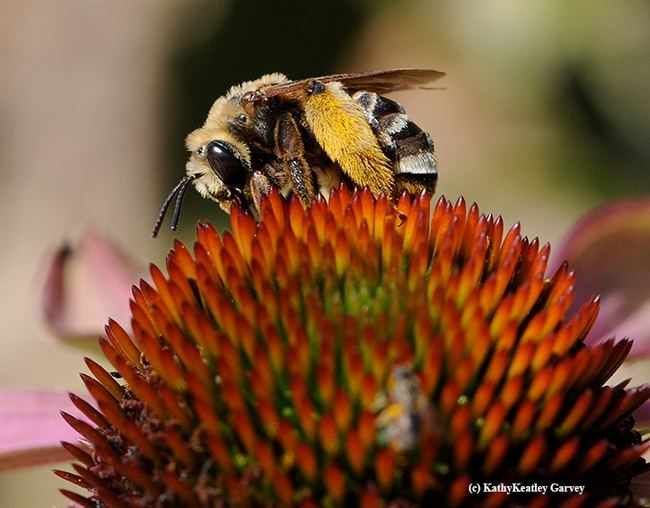
Female sweat bee, Svastra obliqua expurgate, on purple coneflower, Echinacea purpurea. (Photo by Kathy Keatley Garvey)
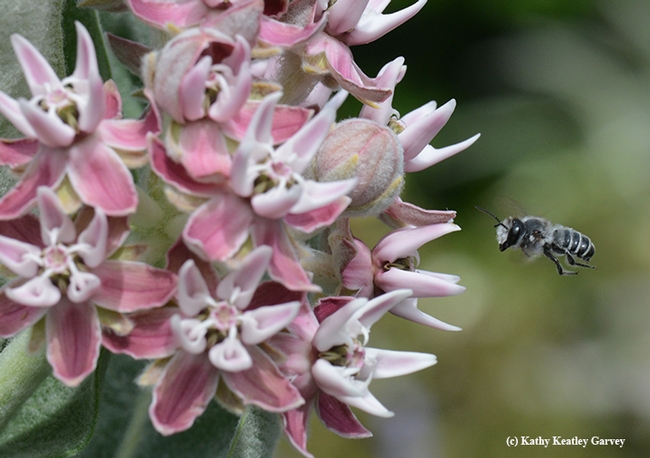
A leafcutter bee, Megachile sp., heading for a broadleaf milkweed, Asclepias speciosa. (Photo by Kathy Keatley Garvey)
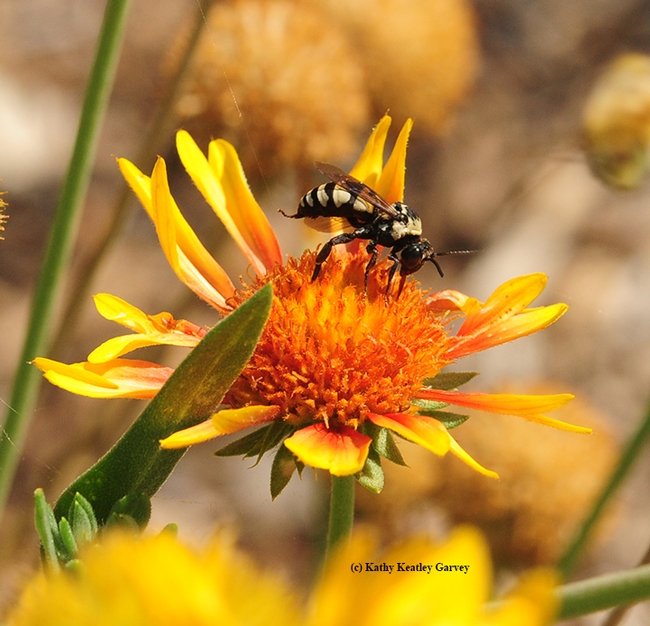
A male cuckoo bee, Triepeolus concavusm, on a blanket flower, Gaillardia. Female cuckoo bees are cleptoparasites; they lay their eggs inside the nests of native bees, including Svastra. (Photo by Kathy Keatley Garvey)
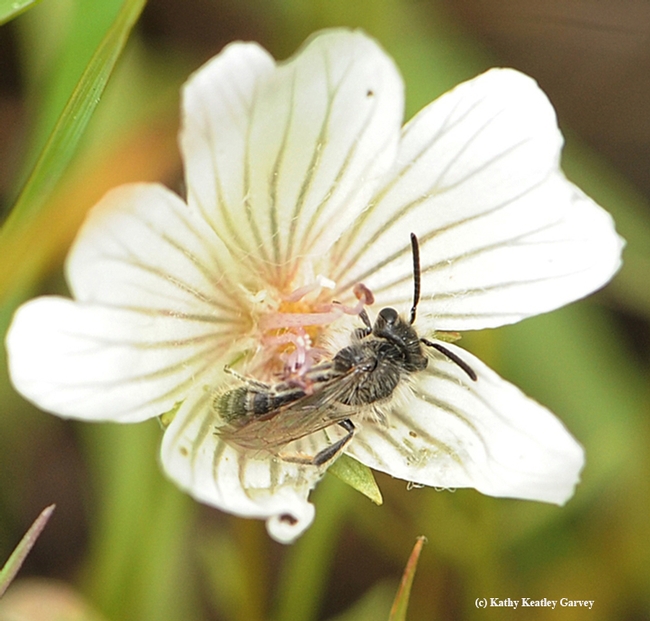
Andrena (mining) bee on meadowfoam, Limnanthes. (Photo by Kathy Keatley Garvey)

